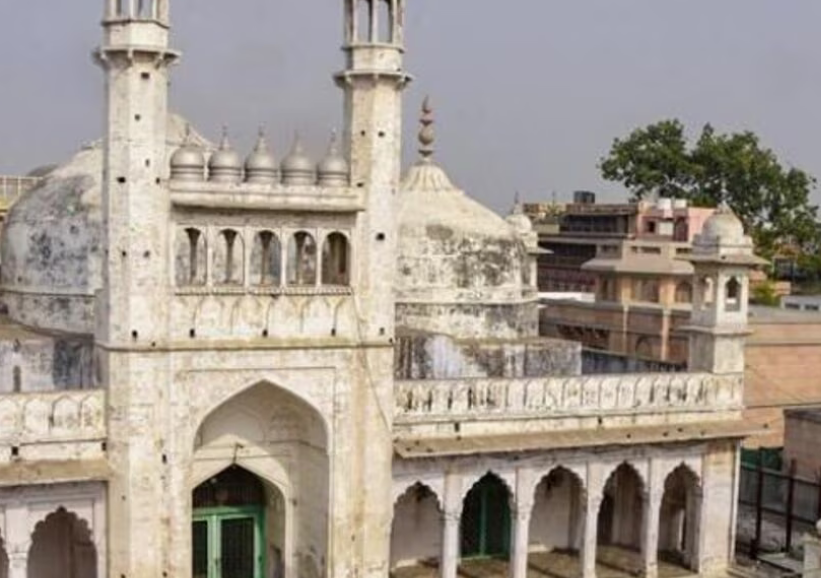ASI’s Gyanvapi Mosque Survey Report
The Archaeological Survey of India (ASI) submitted its survey report of the Gyanvapi mosque complex in Varanasi to the district court in December 2022. The report concludes that remains of an old Hindu temple existed at the site before the construction of the current mosque structure during Aurangzeb’s reign in the 17th century.
Technologies used
ASI used ground penetrating radar, differential global positioning systems and scientific dating methods for the survey. These advanced technologies provided evidence about underground structures without excavation, exact locations of artefacts and age of very old objects at the site.
This finding aligns with Persian chronicles and accounts of historians over the years that a Hindu temple adjacent to the Kashi Vishwanath temple was demolished on Aurangzeb’s orders in the 17th century.
The Persian text Maasir-i-Alamgiri written soon after Aurangzeb’s death in 1707 records his orders in 1669 to governors across India to destroy Hindu temples. This included the razing of the Vishwanath temple in Kashi. Historian Jadunath Sarkar’s translation of this text formed key evidence for the ASI report.
Accounts state that the Gyanvapi mosque was constructed in the 1670s or 1680s, incorporating parts of the destroyed Vishwanath temple’s wall. This reuse of materials may have been an assertion of Mughal power after Hindu rebels were assisted by local elements.
While the Gyanvapi mosque was built on the ruins of the old Vishwanath temple, the current Kashi Vishwanath temple near it was built in the 18th century. The history of temple desecration but persistent rebuilding reflects the enduring public belief in the religious significance of the site.
Evidence of a Hindu temple
The ASI report highlights several architectural and sculptural remains to claim that a Hindu temple existed earlier below the current mosque structure. This includes decorated temple walls, pillars with Hindu mythological carvings, Sanskrit and Dravidian inscriptions by Hindu pilgrims from the 15th to 17th century, and buried sculptures of Hindu deities.
Destruction and modifications
According to the report, the pre-existing Hindu temple was destroyed in the 17th century during Aurangzeb’s rule. Parts of the destroyed temple structure were then modified and reused to construct the Gyanvapi mosque at the same site. For example, Hindu carvings were mutilated from temple materials before being incorporated into the mosque building.
Comparison with Ayodhya verdict
The Supreme Court’s 2019 Ayodhya verdict discussed the evidentiary value of ASI reports in civil trials. As expert opinions, ASI findings can be challenged by parties but provide scientific evidence to the court. Significantly, unlike the Ayodhya report, the Gyanvapi survey conclusively states that a Hindu temple was demolished for mosque construction.
Implications for Hindu plaintiffs
The ASI conclusions legally support the claims of Hindu women plaintiffs seeking worship rights at the Gyanvapi mosque complex. They provide scientific evidence for arguments that a Hindu temple existed earlier at the contested site currently occupied by the mosque. This strengthens the Hindu side’s case in the ongoing civil trial.
Sensitivity of the dispute
However, public release of the report’s incendiary findings has escalated tensions between Hindu and Muslim groups over the communally sensitive Gyanvapi dispute. With religious sentiments inflamed, the trial court now faces greater difficulties in objectively adjudicating the matter solely on legal and evidentiary grounds.
Future court proceedings
During trial proceedings, Muslim parties can challenge the ASI report through cross-examinations. But archaeological opinions from the authoritative ASI will likely carry substantial weight when evaluated alongside other evidence. Much will depend on how objectively the judge analyzes the report vis-à-vis contrary arguments.
Month: Current Affairs - January, 2024
Category: Legal & Constitution Current Affairs


